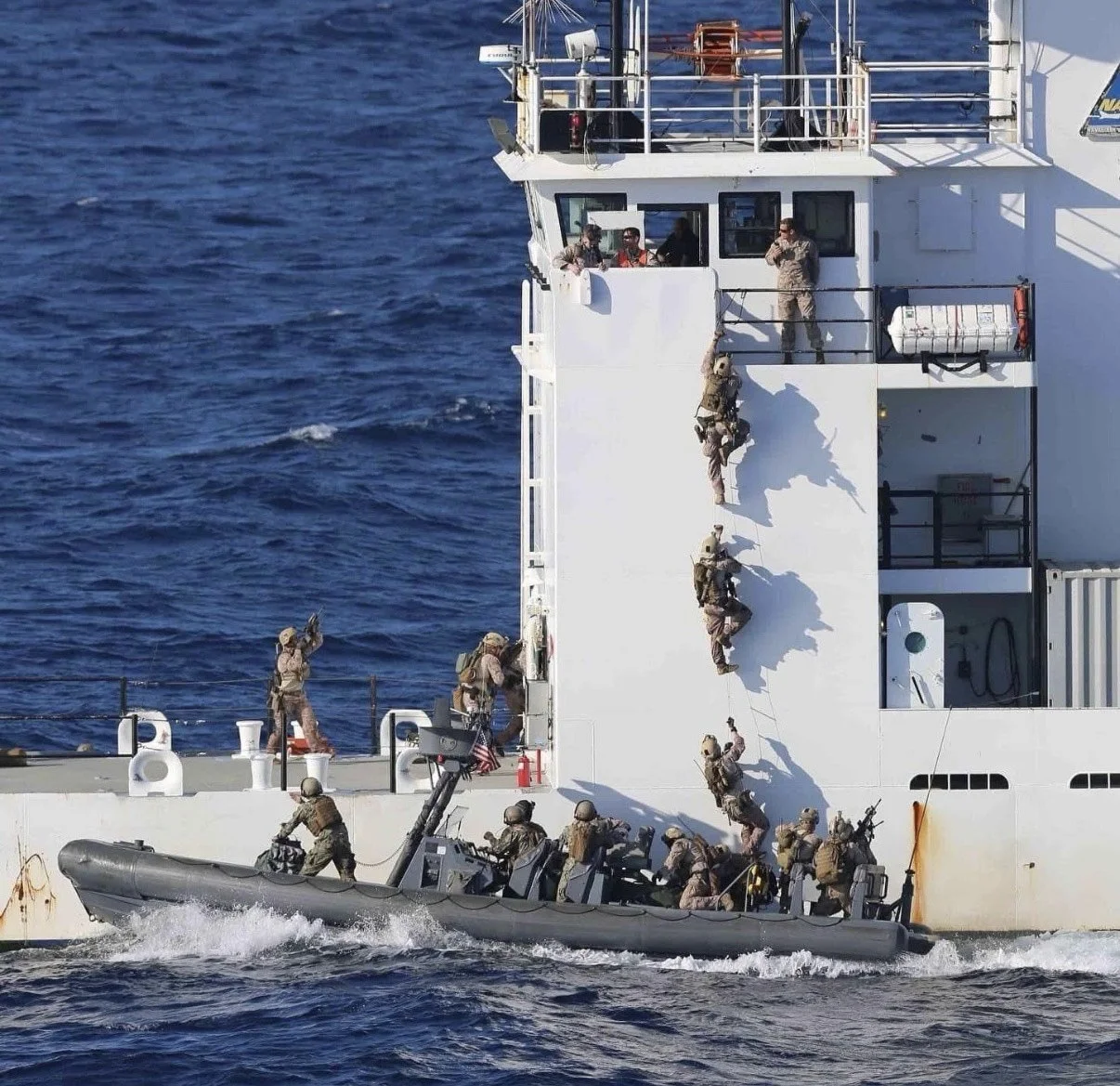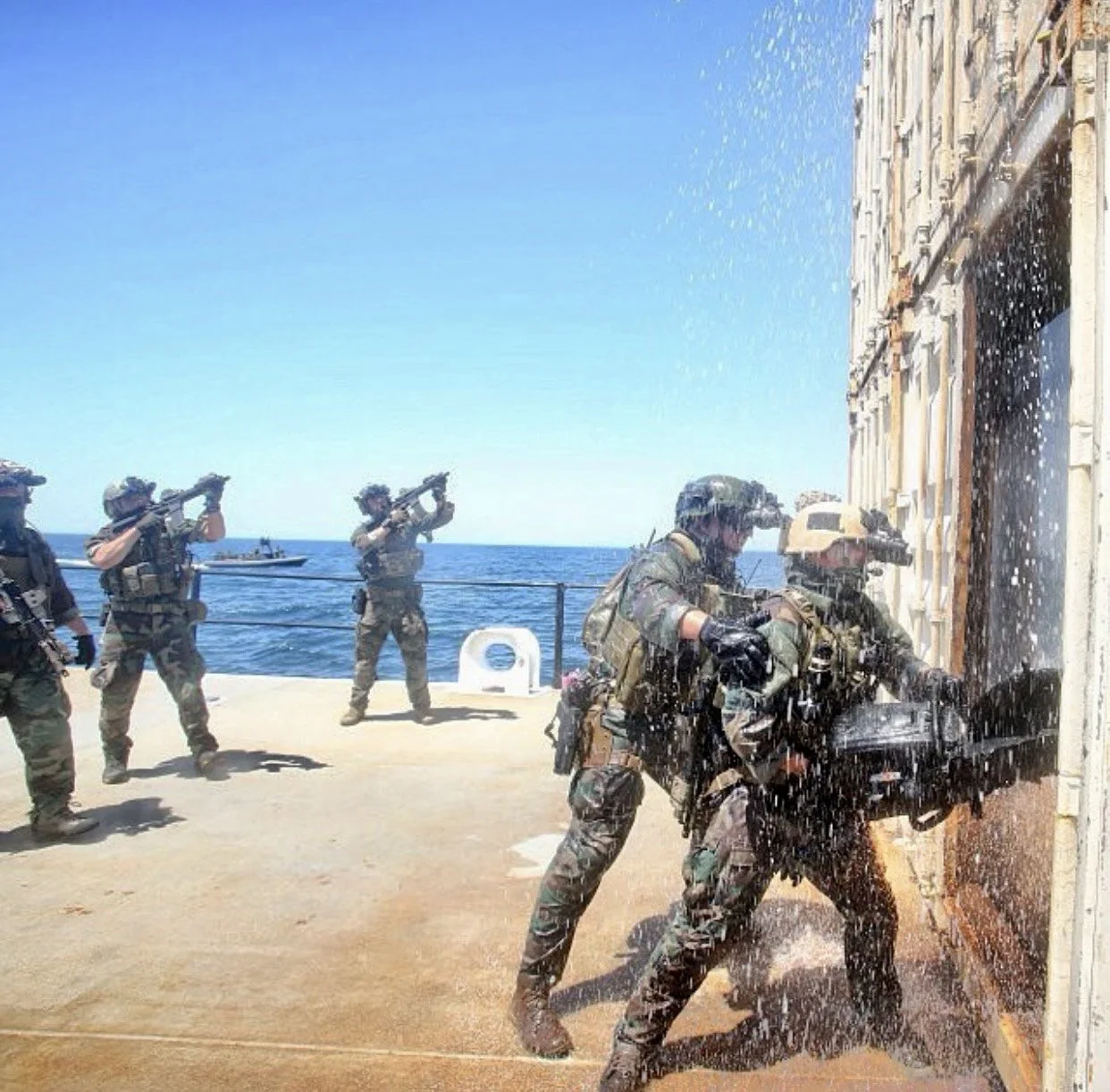
Maritime Readiness Program
Build Capability Through Measured Repetition
High-stakes maritime operations demand crews who can board vessels, conduct searches, handle small boats, and execute shipboard procedures with precision under pressure. This program delivers measurable improvement in crew performance through structured, instrumented training events conducted on operational vessels over 90-180 days. Every program concludes with after-action reports, performance trendlines, and briefable data that validates capability gains and identifies remaining gaps.
No simulators. No theory. Just documented gains in the skills that matter when operations go live.
WHAT YOU GET
Baseline Assessment
We establish where your crew stands before training begins. Performance metrics, skill gaps, and readiness levels are documented through observed drills and structured evaluations. You get a clear picture of current capability - what works, what needs work, and where risk sits.
Structured Training Events
A series of at-sea training evolutions designed to build proficiency in boarding operations, vessel search procedures, interdiction tactics, small-boat handling, and shipboard safety protocols. Each event focuses on specific skills with increasing complexity as crews demonstrate mastery.
Real-Time Performance Tracking
Every training event is instrumented and documented. We track completion times, communication effectiveness, safety compliance, and task execution quality. Crews and leadership see progress in real numbers—not subjective assessments.
Mid-Course Adjustment
Halfway through the program, we assess progress and adjust training focus based on performance data. If certain skills need more repetition or if crews are ready for more complex scenarios, we adapt the remaining events to maximize value.
Final Assessment & Report
At program completion, we conduct a final evaluation using the same metrics as the baseline. The after-action report shows performance trends, quantifies improvement, identifies remaining gaps, and recommends follow-on training priorities. Every claim is backed by data.
OPERATIONAL FOCUS AREAS
Visit, Board, Search & Seizure (VBSS)
Approach procedures, boarding techniques, vessel search protocols, detainee handling, and evidence collection. Trained to Navy and Coast Guard standards with documented performance metrics.
Maritime Interdiction Operations (MIO)
Vessel interdiction tactics, communication procedures, rules of engagement application, and multi-vessel coordination. Rehearsed in realistic scenarios with clear success criteria.
Small Boat Operations
Boat handling in various sea states, crew coordination, emergency procedures, and safe operations around larger vessels. Documented improvement in handling proficiency and safety compliance.
Shipboard Safety & Emergency Response
Damage control, firefighting, man overboard response, and medical emergencies. Drills conducted under realistic conditions with timed performance standards.
WHO THIS SERVES
Naval Forces & Coast Guard Units
Structured training aligned to Navy VBSS/MIO standards and Coast Guard boarding team requirements. Pre-deployment workups and sustainment training with measurable outcomes.
Special Operations Forces
Maritime raid force preparation, over-the-horizon insertion rehearsal, and partner force training. Configurable for classified mission profiles and joint-force integration.
Marine Corps Units
Expeditionary Advanced Base Operations (EABO) support, coastal operations training, and small-boat handling for distributed maritime operations concepts.
Allied & Partner Nations
Training frameworks exportable to coalition partners and allied maritime forces. Clear documentation supports bilateral training agreements and capability development programs.
INTEGRATION OPTIONS
Standalone Program
Complete training package delivered by Tideborn instructors and support staff. Your personnel train on your vessels under our supervision, with full safety oversight, performance tracking, and documentation support.
Joint & Coalition Training
Multi-unit and multi-national training events with standardized metrics and documentation that work across command structures and bilateral agreements.
Pilot-to-Scale Approach
Start with a single crew or team to prove the training model, then expand to additional units using documented results to justify program growth.
WHY THIS WORKS
This program is built by people who've trained boarding teams, run maritime interdiction operations, and briefed senior leadership on crew readiness. We know the difference between training that satisfies administrative requirements and training that actually builds capability you can deploy. Every event is designed around the question: "Will this crew perform when it matters?" We measure what matters - speed, accuracy, safety, communication, and we document progress in formats that work for both operators and program managers. No participation trophies. No subjective assessments. Just measurable improvement in the skills that keep crews safe and missions successful.
REQUEST A CAPABILITIES CALL
Schedule a discussion to define your training objectives, operational timelines, and integration requirements. We’ll outline how the Maritime Readiness Program can be tailored to your unit’s mission profile.


